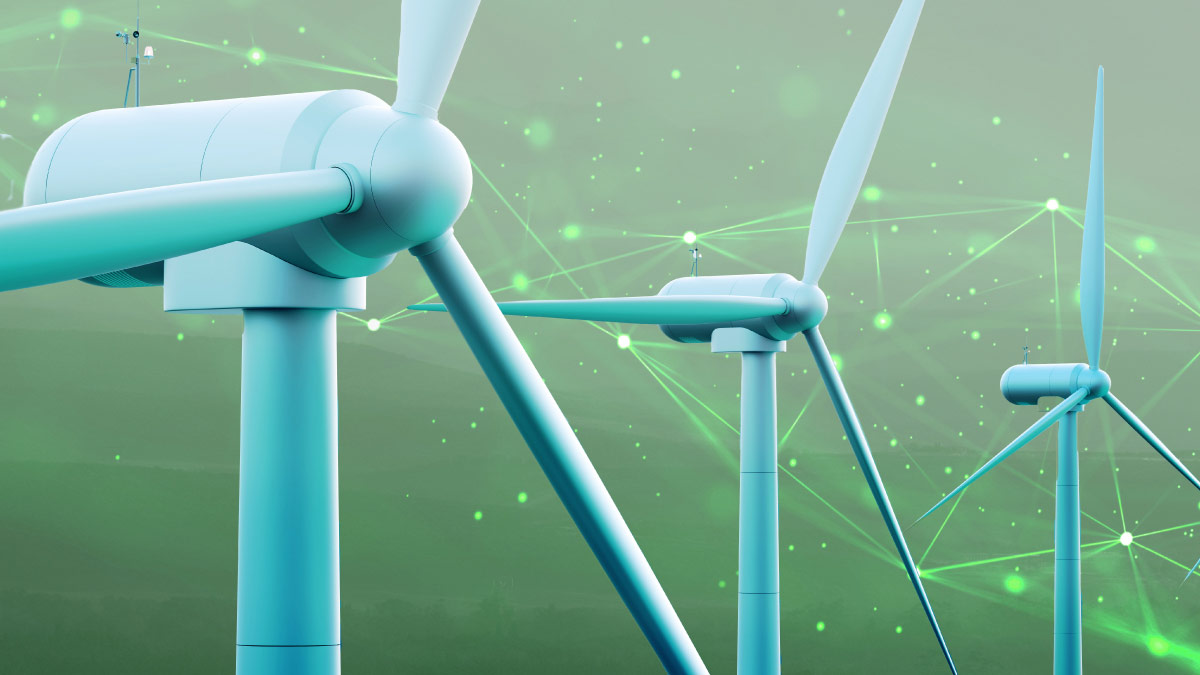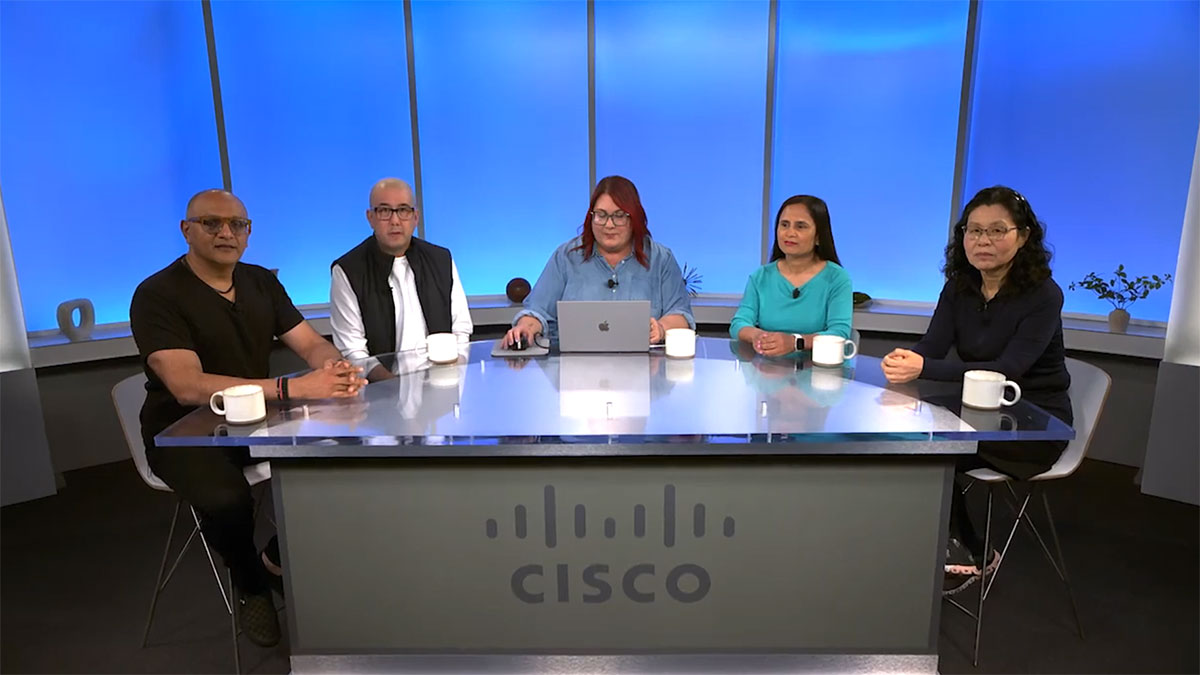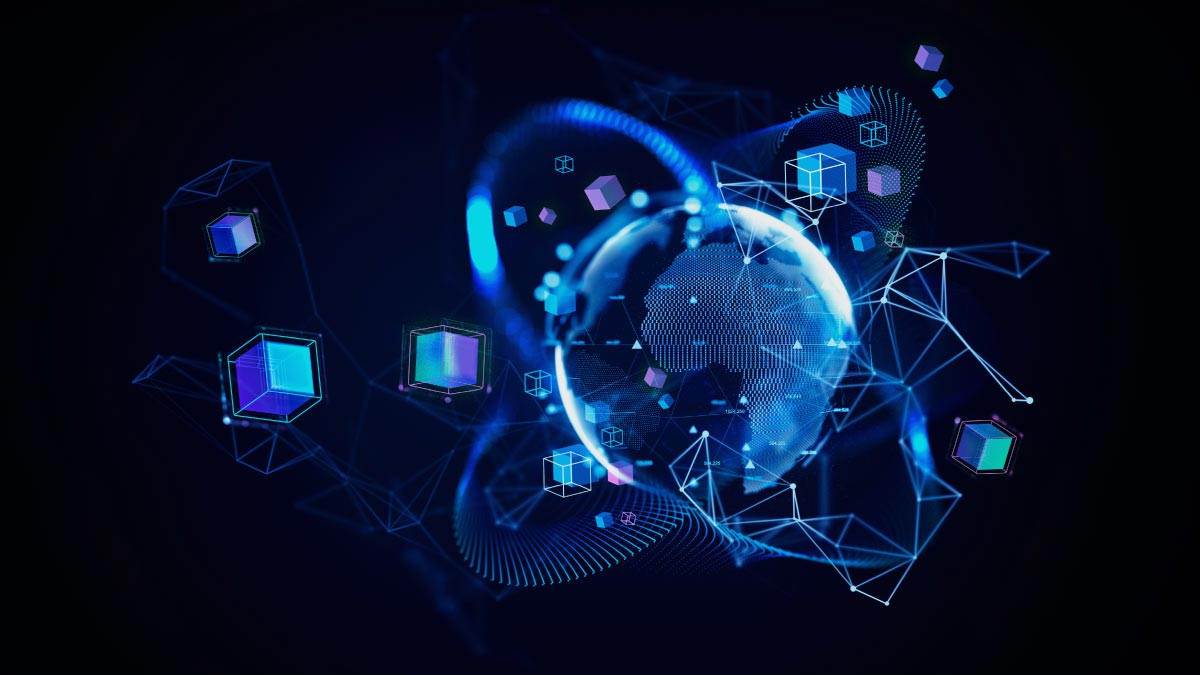Creating a sustainable future demands commitment, passion, and shared responsibility. Along with highly innovative technologies.
That includes the Internet of Things (IoT). From energy utilities and agriculture to smart cities and buildings, IoT can provide the visibility and automation to manage, protect, and optimize complex systems. And with new advances in sensors, edge computing, artificial intelligence (AI), security, and other technologies, IoT is transforming more and more industries — as it can enable businesses to be more efficient, competitive, and sustainable.
In short, after years of promise and predictions, IoT is a force to be reckoned with.
“Today, we have the tools to do IoT better and at scale,” said Michelle Maggiore, transportation business development lead for Cisco’s Industry Solutions Group, “and do it in a way that’s good for business and the planet.”
Supporting IoT being transformative and cost effective is a big part of the puzzle, whether it’s connecting industrial machines, jet engines, vehicles, medical instruments, wind-power generators, and so much more.
“The cost of sensors and the cost of compute have come way down,” Maggiore added. “So, we can actually make sense out of those data right at the edge of the network. Before, we had to take it back to the data centers, where, by the time you’ve sifted through all that data it was too late to be effective.”
Moreover, sustainability encompasses efficiency, which can translate into energy and cost savings. Combine that with increased demands from customers and other stakeholders, and sustainability becomes a business imperative.
“Business leaders once considered sustainability a nice idea,” said Sripriya Narayanan, senior product manager in Cisco’s Industrial IoT business unit, “but that’s changing. “It’s important for businesses as they are trying to conserve their resources. So, whether it’s for governance reasons, regulatory, and/or improving their own business outcomes, IoT can support it.”
Smart energy for better buildings
Building operations, a source of up to 27 percent of carbon emissions in the world, are one example of what IoT can support. At Cisco’s Penn 1 office in New York, a recent retrofit added 5,000 IoT sensors and connected devices to the company’s 9th floor space, providing a constant stream of data that informs automated lighting, environmental, and other systems, running on low-voltage DC power from the network itself.
“At Penn1 in New York City,” explained Denise Lee, vice president of Cisco’s engineering sustainability office, “a Cisco office retrofit has realized a 39 percent energy consumption reduction from April 2019 to April 2022. We made a number of changes, including turning all those connected endpoints into basically an energy networking micro-power grid that’s fully tracked, controlled, and monitored. And that is just a retrofit. Imagine a brand-new building built this way from the ground up.”
At the same time, IoT can help revolutionize energy generation. From managing and monitoring centralized power-generating stations to connecting widely distributed renewable energy sources, IoT — and the network — can contribute to a much more energy efficient future.
As more renewable sources come online, energy can be generated from many disparate sources, some depending on the vagaries of the sun, wind, and/or waves. So, managing those sources efficiently can be that much more complicated.
“We are moving towards energy architecture and production that is fully distributed, with wind farms and solar arrays,” explained Samuel Pasquier, director of product management for Cisco’s industrial IoT networking portfolio. “And that’s where the network is critical and where Cisco can really help. To be able to balance the grid, to increase or decrease the energy supply from different sources means you have to talk to the fantastic devices and sensors across your grid and do it securely.”
Italy’s multinational energy group, Enel, is one utility that’s paving the way for a renewable-energy future in Europe. Together with Cisco’s Country Digital Acceleration (CDA) program, it’s creating the highly distributed energy grid demanded by renewables.
“We have set a goal to reach net zero greenhouse gas (GHG) emissions across our value chain (Scopes 1, 2, and 3) by 2040,” said Fran Katsoudas, Cisco’s executive vice president and chief people, policy, and purpose Officer. “And we are bringing our partners on this journey. The Italian multinational energy company Enel worked with us through the Country Digital Acceleration program to create a digitized smart energy grid that can connect to more sources of renewable energy. We’re digitizing 55,000 electrical substations across Italy and creating a greener power grid.”
Farther north, Chris McGookin, lead OT networking engineer for Scottish Power Renewables, spoke recently about the challenges of operating wind farms amid unforgiving conditions off the Scottish coast. Constant visibility into the functioning of the wind turbines is a must. So, too, is keeping sensors, devices, and the small community of offshore workers securely connected.
“We’re providing everything,” he said, “so that people have Netflix and WiFi, along with the industrial IoT and IT assets. The typical wind farm now is maybe using 500 Cisco industrial ethernet switches and long-range wireless with products like the Cisco Ultra Reliable Wireless backhaul. They help to provide wide-area coverage across the wind farm, connecting all the turbines.”
It's an example of how IoT can contribute to reduced greenhouse gas (GHG) emissions — and support a net-zero future.
“We position our IoT products and solutions across multiple industry verticals, including energy, manufacturing, supply chains, and transportation,” said Narayanan. “And utilities are front and center, especially for supporting renewable sources, managing their grids, and helping to reduce carbon emissions, whether those goals are their own or government mandated.”
Upping the IQ of smart cities
Anyone who lives in a large (or small!) city knows the frustration of traffic jams, parking, and lagging bus service. But beyond those slow, frustrating commutes lies a larger problem — GHG emissions. That’s why managing traffic, public transportation, and utilities is so important, and why IoT can contribute to solutions.
But keeping track of vast numbers of moving vehicles is not easy. For IoT to work in this use case, high speed and low latency are critical. That’s where edge computing can come in.
“There are tremendous complexities,” explained Maggiore. “How do we begin to unseal these data immediately? That’s why we’re collecting them using devices right at the edge, so we can start to apply real-time analytics. Because you have to know what’s happening right when it happens, not after the data goes through all different systems — to the point where nothing is able to interact.”
In San Francisco, smart intersections show what’s possible by reacting to ever-changing traffic conditions, thereby smoothing traffic flow, increasing safety, and reducing emissions. Thanks to a collaboration between Cisco’s CDA program and the city, the networked intersections combine Cisco’s IoT networking and edge intelligence along with DSRC (dedicated short-range communication) and LiDAR (light detection and ranging) sensor technology for precise, nearly instantaneous detection of vehicles, light rail, people, bikes, and scooters.
Caldas da Rainha, in Portugal, is another showcase for Cisco’s smart-city IoT technologies, which coordinate traffic, parking, bus systems, and waste collection. The city is also deploying IoT solutions for its water utility, which have reduced leaks, as well as cutting management costs by 33 percent.
Cisco IoT technologies implemented in Caldas da Rainha’s transformation include Nexus and Industrial Ethernet switches and low power Cisco LoRaWAN™ Gateways to connect IoT sensors and devices.
Keeping it secure and simple, while supporting circularity
If monitoring and managing IoT systems sounds complex, that’s because it is. But it doesn’t have to be for the end-user experience.
With Cisco tools like CyberVision, Industrial Asset Vision, IoT Field Network Director, and Meraki Dashboard, users can gain relevant real-time insights through intuitive interfaces and automation, cutting complexity and speeding response times.
“Simplicity is of paramount importance to our customers,” Narayanan said, “making it simple for technicians to understand and take actions easily. Because many are engineers or technicians but not IT guys. So, we understand the challenges of our customers.”
That simplicity also extends to security. With its far-flung arrays of devices, sensors, and data streams, IoT can potentially open security vulnerabilities — along with multiple layers of complexity. So, keeping it protected and simple to monitor is essential, especially considering that mission-critical systems like energy, manufacturing, and water can be high-profile targets.
In this sense, security can be an enabler of sustainability, since the technology solutions that can support sustainability are not possible without solid security. And, that begins with visibility, knowing what’s happening with both physical and digital infrastructure, and being able to identify, isolate, and respond to a breach before, during, and after it occurs.
“These are very critical infrastructures,” said Pasquier. “So, we are investing in products that provide visibility into the infrastructure. So, you can know what is connected. Then it’s much easier to be able to do segmentation for security. It starts with being able to see what is on your infrastructure.”
At the same time, it is important to integrate sustainability in physical products that enable IoT — like industrial switches and routers. At Cisco, the process of integrating sustainability across the product lifecycle starts with circular design, which involves carefully selecting materials and choosing recycled and renewable sources where possible. It also includes making products more efficient, reducing the environmental impacts of their manufacturing, and better facilitating repair and remanufacturing. The company invests in individual product enhancements with circular design and its product energy efficiency goals.
Of course, innovation should always be about creating a better future.
“Companies and governments are realizing that these problems are not fictional,” said Narayanan. “People have started believing that there are real problems that need to be solved with sustainability and technologies like IoT. So, the future looks promising because more people are realizing that we have to be in this game together.”





